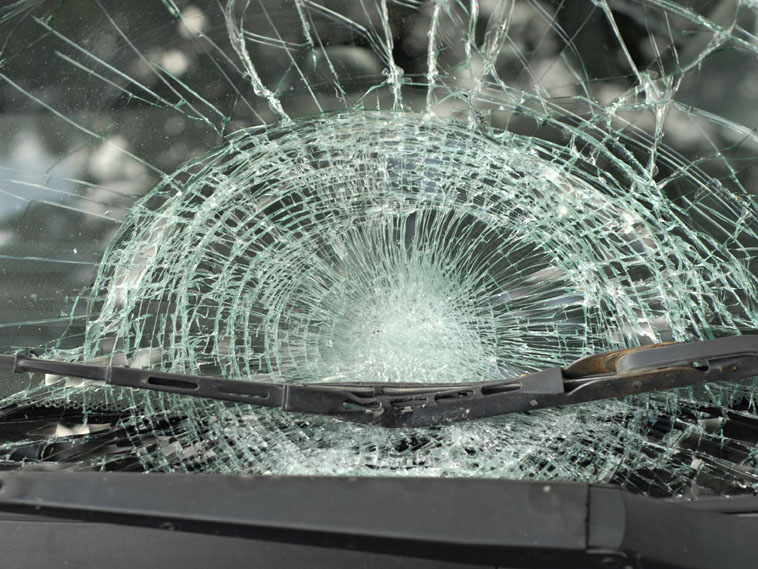
Comprehensive Coverage on an Auto Policy
The coverage we refer to as Collision and Comprehensive in your policy are physical damage protections for the damage done to your automobile. This section covers the Comprehensive coverage which is often referred to as Other Than Collision (OTC) coverage.
Comprehensive coverage is more appropriately referred to as “Other Than Collision” coverage in the language of the typical auto insurance policy because it covers most all other physical damage that can occur to a car other than collision. Collision refers to the damage suffered by your owned auto when the damage is caused by an object or your car in motion. Comprehensive coverage, on the other hand, includes many of the types of losses that happen when the vehicle is not in motion. For example, comprehensive coverage protects the auto when a tree limb falls on the car, or when it suffers an electrical short and burns. There are exceptions to this generality. For example, comprehensive coverage includes instances when the car is in motion and strikes a bird, deer, or animal. If a stone breaks the windshield while the vehicle in motion it is still a claim paid under OTC coverage. All glass damage is covered as OTC losses. Comprehensive coverage includes damage caused by theft, vandalism, fire, flood waters, and other weather events like wind or hail storms.
Comprehensive coverage on an auto insurance policy is not mandatory. Comprehensive coverage is often a very reasonably priced physical damage coverage on an auto insurance policy. Comprehensive insurance is damage you claim on a first party basis from your own insurance company. If you have a loan or lease on the vehicle you lender generally requires “full coverage” which means that collision and comprehensive damage is covered under your policy. OTC insurance is almost always offered with a deductible but it is often less than the deductible on collision coverage. The presence of deductible means that you are responsible for the damages you incur up to and including the deductible amount. The damages above and beyond the deductible are then the responsibility of the insurance company up to the value of the vehicle. OTC losses are sometimes referred to the “acts of god” losses since they do not require the assignment of fault to any individual. The most common deductibles are $100, $250 and $500 for OTC coverage these days but depending upon the carrier, higher and lower deductibles may be available. We usually suggest deductibles consistent with your ability to pay and your comfort if required to pay a larger deductible in a loss. Generally speaking, the higher the deductible the lower the cost of the collision insurance on your policy. One option available to insurance clients by some carriers is the availability of a $0 (zero) deductible on glass damage which permits a higher deductible as an option for all other losses. Most companies will also waive the deductible for glass repair. Replacement of glass, however, will still require a deductible be subtracted if one is present on the policy. The idea is that minor chips, pecks and bulls-eyes can be repaired in most instances, saving the full cost of replacement glass.
Valuation of your damage and your vehicle after a loss is one of the most contentious areas experienced by insurance customers with their insurers. Unless the vehicle is insured under special terms reserved for vehicles with unique value, or where there are stated limits of coverage, everyday autos are insured with valuation determined according to what is known as “actual cash value.” ACV, as it is known, refers to the depreciated value of a vehicle at the time of loss. Condition may influence the value, as well as the marketplace of values for similar cars in similar condition. All losses where repair is necessary are subject to consideration of the repair as betterment. Betterment violates basic concepts of insurance so some carriers may ask for non-critical components to be repaired with used, reclaimed, or reconditioned parts. It is consistent with industry practice and some carriers give you the choice to opt for new parts rather than used or reclaimed parts for an additional premium. Your OTC coverage does not have a limit. Instead, your carrier uses a symbol system that represents the approximate new cost of a vehicle and they then apply aging factors to the car to adjust the cost for physical damage coverage over time as the vehicle declines in value and ages (depreciates with use). These symbols are used by every carrier and most insurers use similar systems of evaluating cost for insurance cars. Final valuation is determined based on several factors including the approximate cost of similar vehicles for sale in your area.
If you have any concern over the value of your car or whether it still makes sense to insure for physical damage coverage, consult with me or consider the value of your car in pricing guides like NADA, Kelley Blue Book, Edmunds, or Consumer Reports car price services.
Auto Insurance Topics
- Bodily Injury & Property Damage Liability
- Uninsured Motorist
- Underinsured Motorists
- Medical Payments
- Collision Coverage
- Comprehensive Coverage
- UMPD Coverage
- Road Service
- Rental Car Coverage
- Gap Insurance
- Other Coverage
- Auto Endorsements
- No Fault Law
- SR22 Filing
- Coverage in Canada
- Coverage in Mexico
- Sample Auto Policy
- Definition of Liability
- Understanding Your Auto Insurance Policy
- Auto Insurance Declaration Page
- Ohio Auto Insurance Quote














